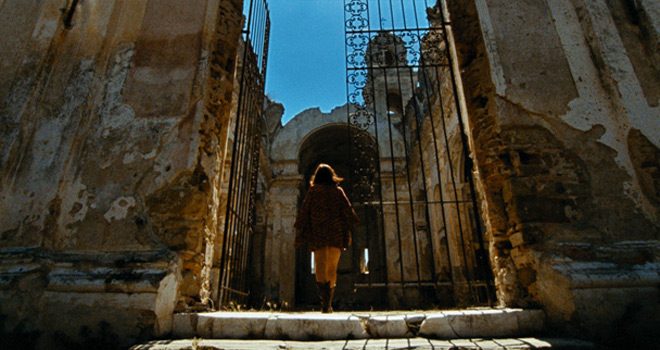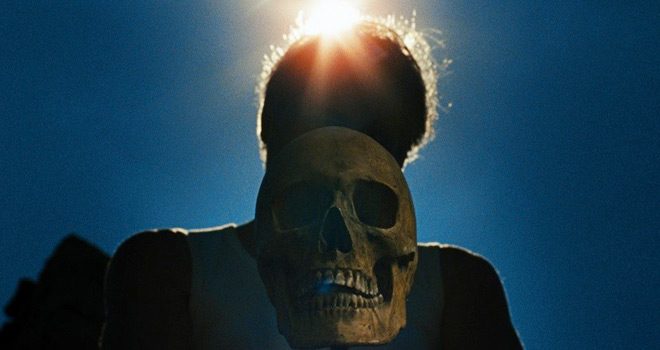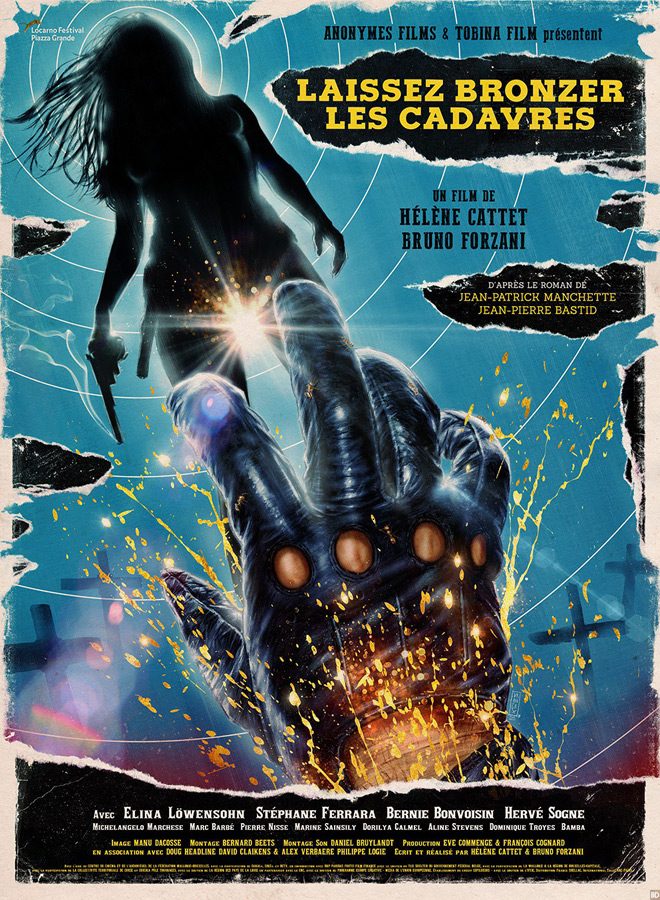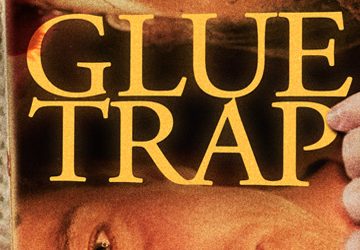There is a quote in the Old Testament that says, “There is nothing new under the sun,” but it has been the lot of creative enclaves of humanity to defy this axiom in order to inject our fleeting time on Earth with novelty. Furthermore, Writer Georges Polti posited that there are only 36 dramatic storylines and that every story is made up of one or a composite of these.

The story of French film Let the Corpses Tan, originally titled Laissez bronzer les cadavres, is not a new or notably inventive story and its betrothed Belgian Directors, Hélène Cattet and Bruno Forzani (Amer 2010, The Strange Colour Of Your Body’s Tears 2013) designed it that way. Their hearts are driven by a fervent and stir-crazy love for niche genres of decades past and they keep a hypnotic bead on the faithful recreation and exaggeration of these indicative techniques and visual stylings. The result is a technicolored piece of art that makes the audience chase the dragon, drunkenly, through a garden of shell casings.
Initially released to the festival circuit on August 4, 2017 at Locarno Film Festival in Switzerland by Belgian film company Anonymes Films and French production house Tobina Film, it has since been shown in various countries, including the USA. Most recently screened on November 5th at Ithaca Fantastik Film Festival in Ithaca, New York, more and more people are discovering this spellbinding new film.
The story, set in a stunning Mediterranean landscape, follows a gang of robbers, led by the enigmatic “Rhino” (Stéphane Ferrara: Alexander 2004, Paprika 1991), who violently stick up a security van for 250 kilograms of gold (roughly $11.5 million USD or €9.8 million) and make off to their makeshift hotel hideout: a dilapidated stone outpost run by cold and seductive Madame Luce (Elina Löwensohn: Schindler’s List 1993, A Very Long Engagement 2004). Tensions run high as the film turns into a massive hallucinogenic shootout through the jagged ruins. Entangling alliances, savage betrayals, and innocent bystanders further complicate the impossible situation and neuter the rewards, making all of the violence and risk incurred in the robbery for naught when the dust settles.

The previous films of Directing duo Cattet and Forzani, 2009’s Amer and 2013’s The Strange Color Of Your Body’s Tears were affectionate nods to the Italian Suspense and Horror films of the 1970s known as Giallo (“yellow” in Italian). Gialli were hallmarked by dramatic color schemes, sweeping musical scores, and camera work that stylishly defied convention. They were often beguiling and subtle with interspersed moments of terror and brutality and Cattet and Forzani, in their homages, grabbed handfuls of these modalities and constructed breathtaking monuments around them.
With Let the Corpses Tan, they cast the same spotlight of artful esteem onto a lesser internationally-renowned genre of Italian film called Poliziotteschi. Poliziotteschi dealt with themes of crime and punishment, often with a comment or subtextual shot at Italy’s neo-fascist movement, headed at the time by Arturo Michelini and, later, Giorgio Almirante.
Poliziotteschi are steeped in bloody gunfights and hardboiled detective narratives while shot similarly to Giallo using the same impeccable sense of design and elegant camerawork. Cattet and Forzani layer Let the Corpses Tan with fathoms of the colorful strata that is so uniquely indicative of these mid-20th century Italian films, resulting in one of the most inspiring and visually arresting films of 2017.
Cinematographer Manuel Dacosse (The Strange Color Of Your Body’s Tears 2013, The ABCs Of Death 2012) dances the camera through the run-down ruins, deftly weaving through the sheets of gunfire. Showing an acute grasp of the genre’s norms, he utilizes long tracking shots and smooth, elegant pans, as well as characteristically tight close-ups on furious and calculating eyes. There are dream sequences shot in an almost unreachable high contrast that turns figures standing in abject, broad daylight into silhouettes and day-for-night shots that bear a closer resemblance to Neoclassical paintings than film. These are cinematic tactics that had fallen by the wayside as camera technology advanced, but are reissued here with a new novelty, by virtue of absence from current popular film; they are a gorgeous vintage, brought back to life and modernized.

Let the Corpses Tan is unabashedly “style over substance,” but the style is palpable and supersaturated. Cattet and Forzani aimed more to honor these type of films and recreate a feeling, rather than become another entry into the annals of Poliziotteschi, but they managed to do both with this film. The audience can tell Cattet and Forzani love this genre and know it down to its very fiber and essence. They are august scholars of it and Let the Corpses Tan is their dissertation.
For its stunning and faithful depiction of a genre—and furthermore, era— gone by, CrypticRock gives Let the Corpses Tan, aka Laissez bronzer les cadavres, 4 out of 5 stars.






No comment